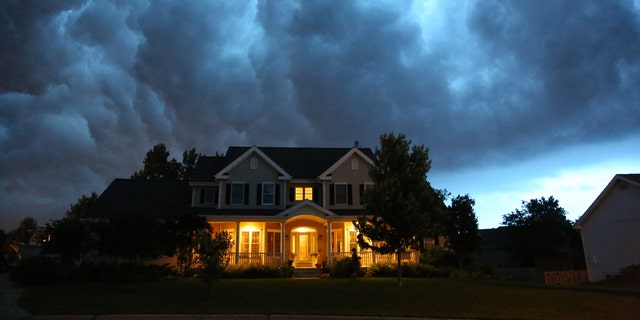Thunderstorms associated with asthma, COPD flareups lead to more than 3,500 ER visits annually: study

Fox News Flash top headlines for August 11
Fox News Flash top headlines are here. Check out what’s clicking on Foxnews.com.
Thunderstorms are linked with an average of 3,700 emergency department (ED) visits annually in the U.S. among seniors with respiratory illnesses, including asthma and COPD, according to a study published in JAMA Internal Medicine on Monday.
The study suggests thunderstorms could worsen symptoms of COPD and asthma in older patient populations.
“In this study, ED visits peaked before the thunderstorm," the researchers stated. “Assuming an average 65 years or older population of 37.7 million Americans (based on census data), approximately 52,000 additional respiratory ED visits were estimated to occur in the three or more days surrounding major storms during the 14-year study period," or an average of 3,700 visits a year.
INHALED DRUG SHOWS PROMISE IN CORONAVIRUS TREATMENT: STUDY
The researchers out of Harvard Medical School in Boston collected lightning and atmospheric data throughout the U.S. from 1999 through 2012 in over 3,000 counties. They then compared it to increases in emergency department visits due to respiratory conditions in older patient populations in the days before and after thunderstorms. The researchers also used data collected from 46 million Medicare beneficiaries older than 65 to identify visits due to acute respiratory illnesses. Of those analyzed in the study, more than 26% had COPD, 10% had chronic asthma and 6.6% had both, according to the study.
“Emergency visits for acute respiratory illness significantly increased during the days before major thunderstorms among Medicare beneficiaries, particularly those with asthma and/or COPD," the authors stated.

Thunderstorms are being associated with an increase in emergency department visits by older adults with chronic respiratory illnesses. (iStock)
They explained the ED visits were associated with atmospheric changes, the temperature rises, and increased air pollution that compromised breathing in patients with chronic respiratory diseases, ultimately causing them to seek medical help.
“For those with respiratory illnesses like chronic obstructive pulmonary disease (COPD), which includes bronchitis and emphysema, the weather has been a factor in leading to exacerbations. This is because both temperature and humidity can lead to flares," Dr. Fred Davis, a physician at Northwell Health Long Island Jewish Hospitals Emergency Department on Long Island, N.Y., told Fox News.
Another possible reason for the correlation, Davis said, could be that during thunderstorms, increased wind could blow allergens and particles around that may lead to flares in those with asthma and COPD.
"Those that are older are more susceptible to temperature changes and those with respiratory illnesses should be cognizant of the weather to plan accordingly. Part of this planning would be times to reduce outdoor exposure and always carrying their rescue medication with them," the emergency medicine physician added.
DIETS HIGHER IN PROTEIN, PARTICULARLY PLANT PROTEIN, LINKED TO LOWER RATES OF EARLY DEATH: STUDY
“It's the weather pattern prior to the thunderstorms that seemingly caused the breathing problems. And that makes sense because it is usually hot [and] humid before thunderstorms form," a chief meteorologist told Fox News.
“Plants are known to release spores, pollen and allergens under these circumstances. Then the gusty winds, either prior to or accompanying the thunderstorms, will transport them in higher percentages and greater distances. So [yes], I can see the correlation but one has to lead to the other and that makes it appear like the thunderstorms are causing the breathing problems but actually it's what leads up to them. The timing goes hand in hand.”
The increase in temperature and particles in the air are both possibly the dominant triggers to thunderstorm-associated acute respiratory flare-ups in older populations, the study authors said, noting that this “may contribute to strain on the health care system as storm activity increases with rising global temperatures."
Source: Read Full Article
